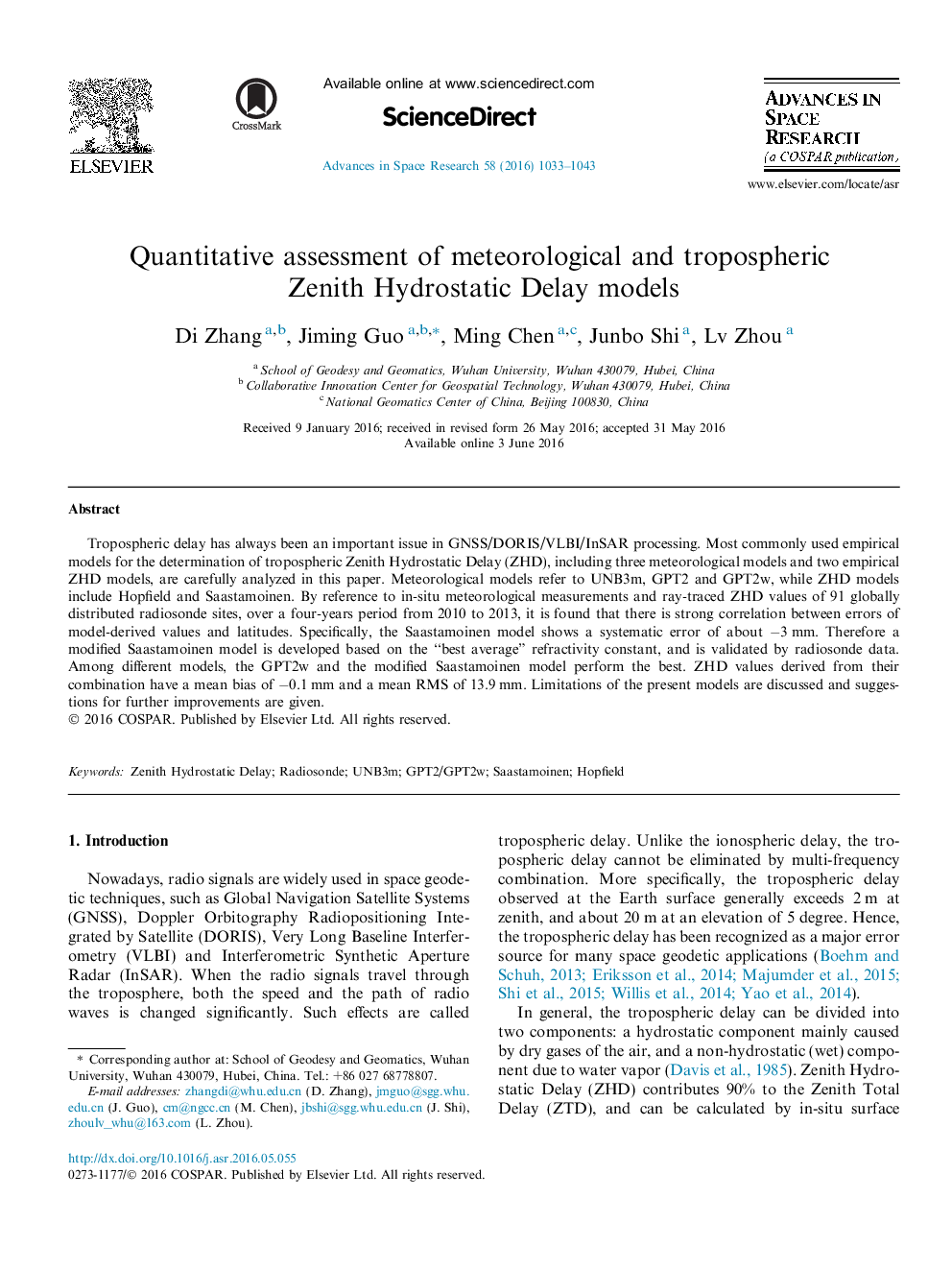| Article ID | Journal | Published Year | Pages | File Type |
|---|---|---|---|---|
| 1763217 | Advances in Space Research | 2016 | 11 Pages |
Tropospheric delay has always been an important issue in GNSS/DORIS/VLBI/InSAR processing. Most commonly used empirical models for the determination of tropospheric Zenith Hydrostatic Delay (ZHD), including three meteorological models and two empirical ZHD models, are carefully analyzed in this paper. Meteorological models refer to UNB3m, GPT2 and GPT2w, while ZHD models include Hopfield and Saastamoinen. By reference to in-situ meteorological measurements and ray-traced ZHD values of 91 globally distributed radiosonde sites, over a four-years period from 2010 to 2013, it is found that there is strong correlation between errors of model-derived values and latitudes. Specifically, the Saastamoinen model shows a systematic error of about −3 mm. Therefore a modified Saastamoinen model is developed based on the “best average” refractivity constant, and is validated by radiosonde data. Among different models, the GPT2w and the modified Saastamoinen model perform the best. ZHD values derived from their combination have a mean bias of −0.1 mm and a mean RMS of 13.9 mm. Limitations of the present models are discussed and suggestions for further improvements are given.
